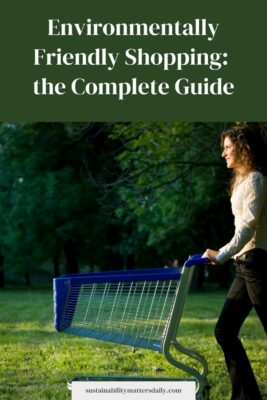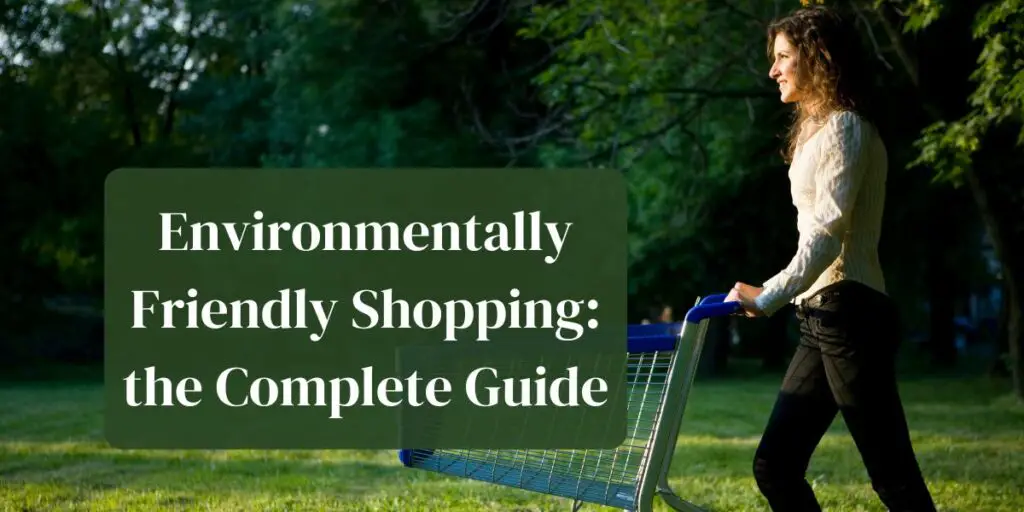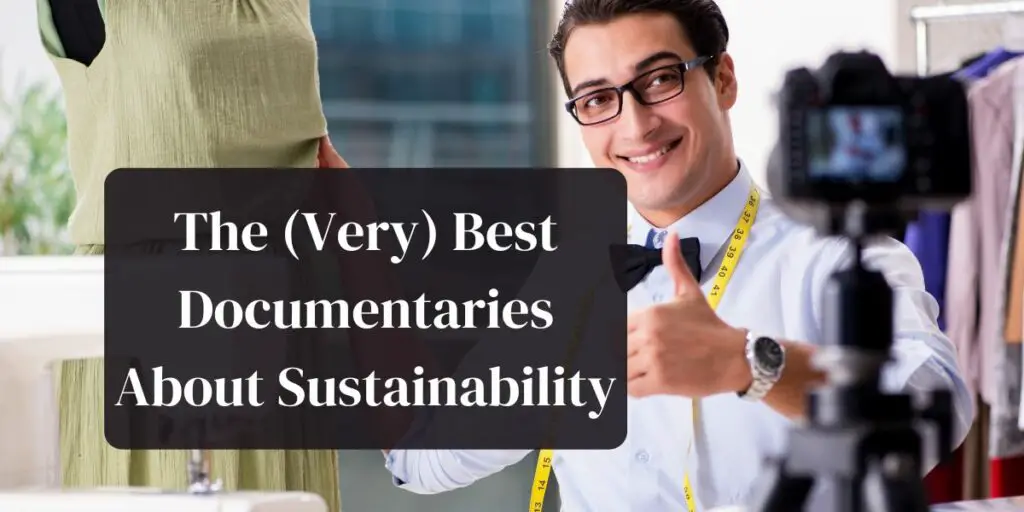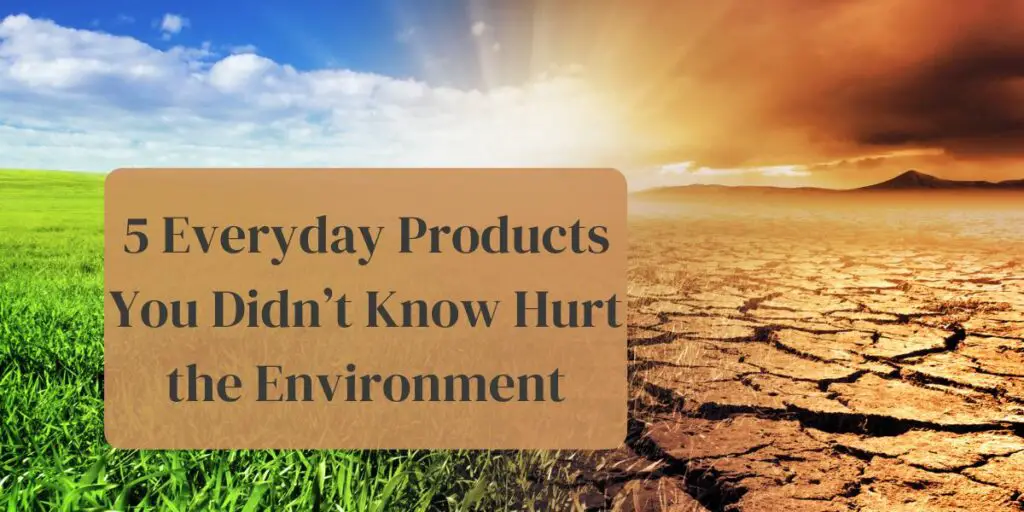What we consume is a big part of our complete environmental footprint. There are some guidelines that you should know about to understand how you can be a more eco-friendly shopper. According to Medium.com, shopping is actually something that was invented. Yes – invented. In other words: historically it was never a human need to walk around in shops and buy a lot of stuff that we really did not need.
Purchases have become something emotional now. People do not need to buy a pair of Uggs. They are neither the cheapest nor the most comfortable nor the most convenient alternative out there. Yet people are buying them because, as Medium writes, “you get the feelings that you purchased. You feel comfortable, and you feel like you fit in with your group of friends”.

Table of Contents
- Ask yourself: What do you really need?
- The “no waste movement”
- “Zero Waste” – How it works
- How fast fashion hurts the environment
- Conclusion
Ask yourself: What do you really need?
That is probably the most relevant question when we try to guide people about environmentally friendly shopping. If your cell phone is 3 years old and have started to operate slowly – sure. You need a new one. If your washing machine is broken for the third time in less than six months – sure. Order a new one straight away.
But you do not need five different hats. Or 10 different pair of pants.
Overconsumption is a topic that can easily be explained by some facts:
12 % of the global population lives in North America and the Western part of Europe. But they still account for about 60% of the total private consumption spending.
People in developing countries are often seeing a car as one of the most important purchases. That is creating a huge environmental problem.
1950: 2.6 billion people and 53 million cars.
2015: 6 billion people and 350 million cars.
The “no waste movement”
Have you ever heard about “no waste influencers”? Probably not.
But there are a lot of them. The definition of a “no waste blogger/influencer” is a person that through social media channels or own blogs (often a combination) shows how it is to live a life without creating any waste at all. And it is quite fascinating.
If you live a “normal” life (and by “normal” we mean “average”), you create about 4.6 pounds (ca. 2 kg) of trash every day. That equals about 700 kilos annually. Imagine if you got a challenge tomorrow. That challenge would be: over the next 365 days, you should maximum produce 1 kilo of trash. Would you do it?
The first question that pops up to mind when you hear about the infamous “Zero Waste Movement” is: how do they do it?
“Zero Waste” – How it works
It is not only about environmentally friendly shopping. In fact, not producing any trash is an extremely complex task that influences several aspects of a person’s life.
These are just some of the rules that you should follow:
Grocery store: buy in bulk
Start by buying in bulk. We know for a fact that landfills in America contain around 40 % of packaging material. If you take a couple of minutes planning before heading out to the grocery store, you will be able to eliminate a lot of that trash.
Action points:
1) Bring your own jars where you store bulk items before you purchase them.
2) Do bring your own reusable shopping bag. Plastic bags are a clear no-go!
Once you have had your meal…
Do you throw the rest of the food in the trashcan? Oh no, you don’t. About 40 % of all food will end up in the trash, which is horrible. You have to learn to love your leftovers.
Action point:
1) If you make more food than you can eat, wrap it in some containers and eat it the next day. A microwave is an excellent investment to reduce food waste.
Having your lunch
Bad lunch habits can be expensive for your wallet. They can also leave a pretty bad environmental footprint if you don’t follow these simple rules.
Action points:
1) When you read the news during lunch, please do it digitally. In the USA, the average office worker generates as much as 250 gram of paper – every day. That is massive.
2) Make your lunch at home and bring it to the office. A plastic-wrapped sandwich from Starbucks or the canteen is not an environmentally friendly option. It creates a lot of unnecessary waste.
These are just some of the daily routines that you should change to get close to “zero waste”.
Also read: Is cooking at home better for the environment? and The zero-waste kitchen starter guide
Research: trying “Zero waste” for a week
A YouTube influencer called Michelle Khare, which is quite popular, tried to do a full week without producing any waste. She begins the video by explaining that herself and her friend produce a lot of more trash than they should. That is why they wanted to try this out for a week.
The most famous “Zero Waste blogger”, Milena Gimbovski”, got a Zero Waste Shop where people can come in and purchase all types of food and drinks without bringing home a lot of unnecessary packaging.
They quickly understand that it is quite difficult to do this project when they are going to buy products in restaurants and “normal” grocery stores.
How fast fashion hurts the environment
When you hear the answer “it`s trendy” or “it`s in” upon a question on why a person bought that specific clothing item, you know the world is in trouble. Or at least you should know it.
Trends are created by an industry that is very often referred to as Fast Fashion. And it is this specific industry that is responsible for various types of pollution. The main environmental problems connected to the fast fashion industry are:
1) Water pollution in third world countries
2) Toxic chemical use
3) A huge amount of textile waste
Let us try to get the bottom of each problem to actually understand how they hurt the environment.
Also read: The 10 most creative sustainable fashion campaigns
Textile waste
Let us start with the textile waste. According to the Center of EcoTechnology, the US generated about 5 billion pounds of textile waste in 1980. 24 years later, in 2014, that number had grown to 32.44 billion. And when we know that only a fraction of all textiles are being recycled, we might start to understand how big impact this will have on the environment.
Water pollution & toxic chemicals
There are two issues related to water and the fast fashion industry. The first one is about water usage. It takes more than 15,000 liters of water to produce a three t-shirts. When you think of how many t-shirts you have in your closet, you might start to understand the issue.
A great example is what happened in Uzbekistan. You probably did not know, but this gigantic Asian country is the home to a gigantic part of the global textile industry. Many companies have seen Uzbekistan as a adequate alternative to China due to the fast logistic/shipping possibilities to Europe and USA. There are two big rivers that pass through the country: Amu Darya and Syr Darya. As the cotton industry started to grow in Asia throughout the 1950s, companies saw it as natural to use these two rivers as their main water supply in the factories. The problem is that the massive amount of water it takes to produce jeans, sweaters and t-shirts have started to dry them out.
The rivers have now lost 15% of their water level compared to what they were 50 years ago. And almost everything can be traced back to the fast fashion industry.
Another big issue is the water pollution. A lot of the chemicals being used in manufacturing countries end up in the nature. And a fair share of them end up in rivers, which again leads out to big oceans.
Conclusion
There are probably loads of things you can do today (or tomorrow) to live more environmentally friendly. And buying fewer things is very possibly one of them. When you see the statistics over how many things we buy, you also understand that it will have a big negative impact on the environment.
You do not have to go to zero waste from one day to another. That is probably not going to work. But if you step-by-step work towards making your life greener.



Hello,
Thanks a lot for this guide. Previously I was a person that was really interested in fashion products. Then I started to educate myself about fast fashion and the impact it would have on the environment. MY GOD!!
There are so many reasons why you should not start to buy t-shirts at 5 $ that you will throw out in three-four months just because it does not appear to be popular anymore. I was like that. And I know that a lot of my friends still are, so I guess I will share this post on Facebook and see what types of reactions I can get from that^^
best,
Brenda
Hi Brenda,
thanks for your comment. Being interested in fashion will, unfortunately, also mean that you very often create a lot of waste. Fast fashion is not a very environmentally friendly industry.
Sounds good that you have started to realize that you need to change. Thanks a lot for educating your friends about this topic as well. 🙂